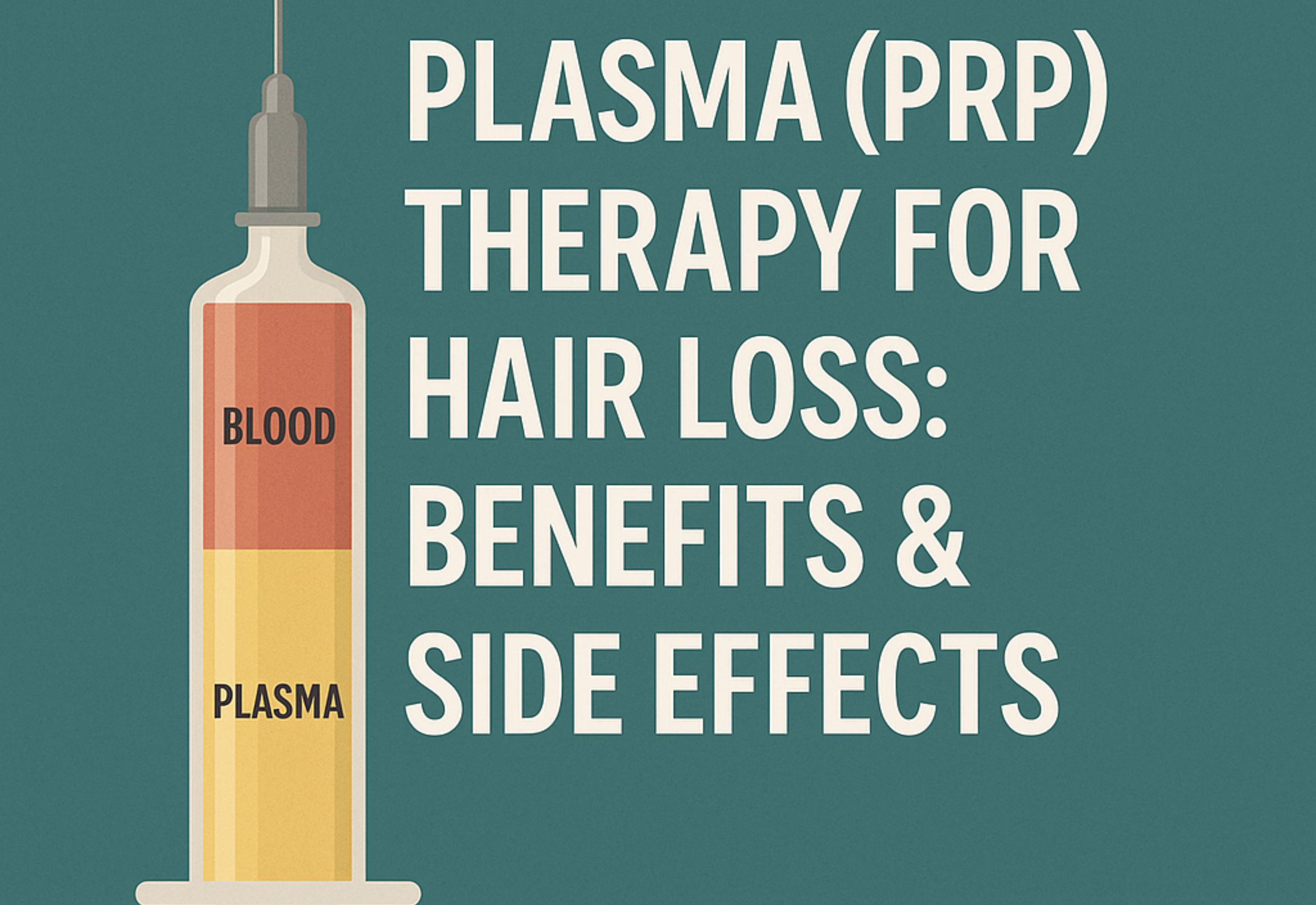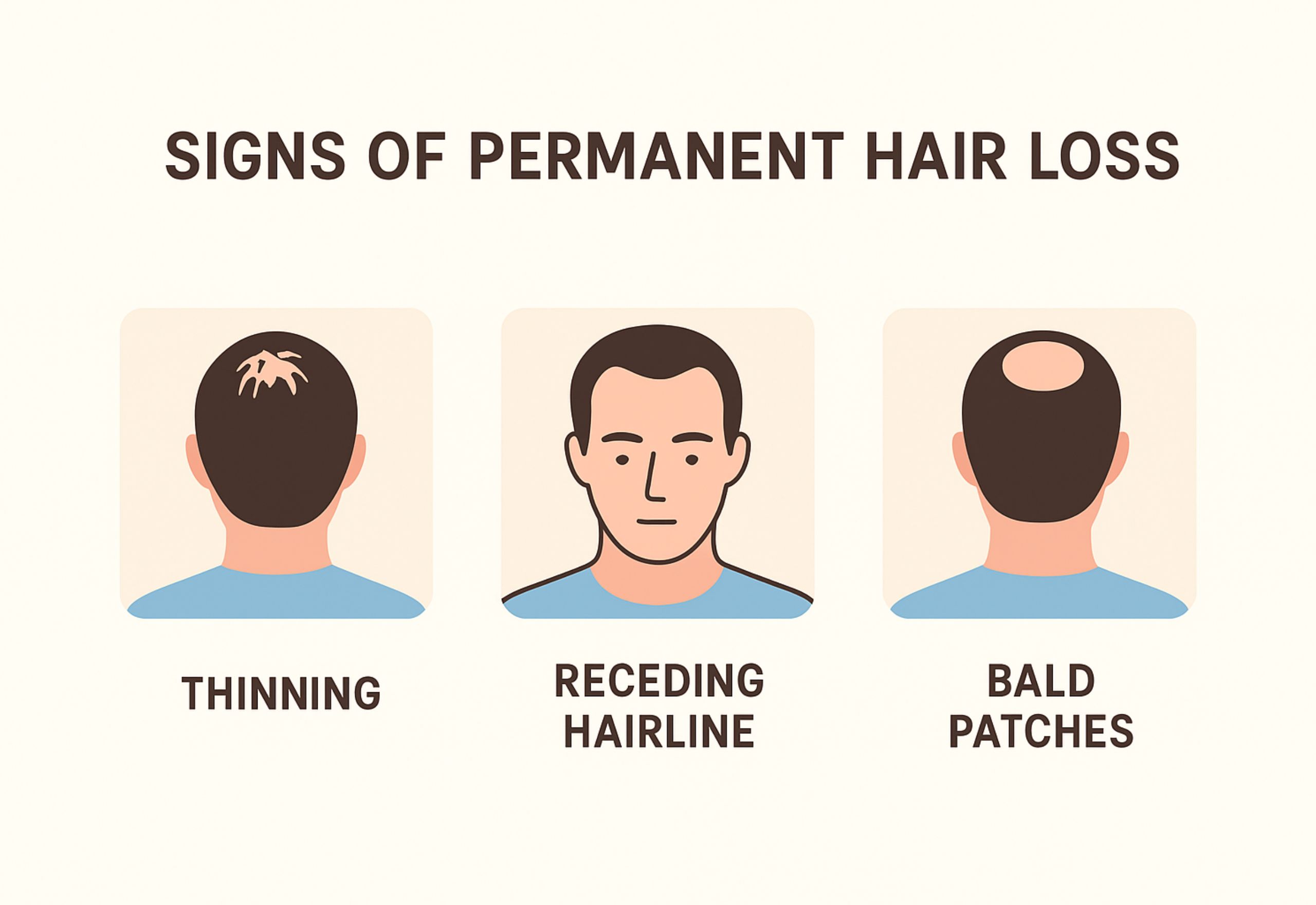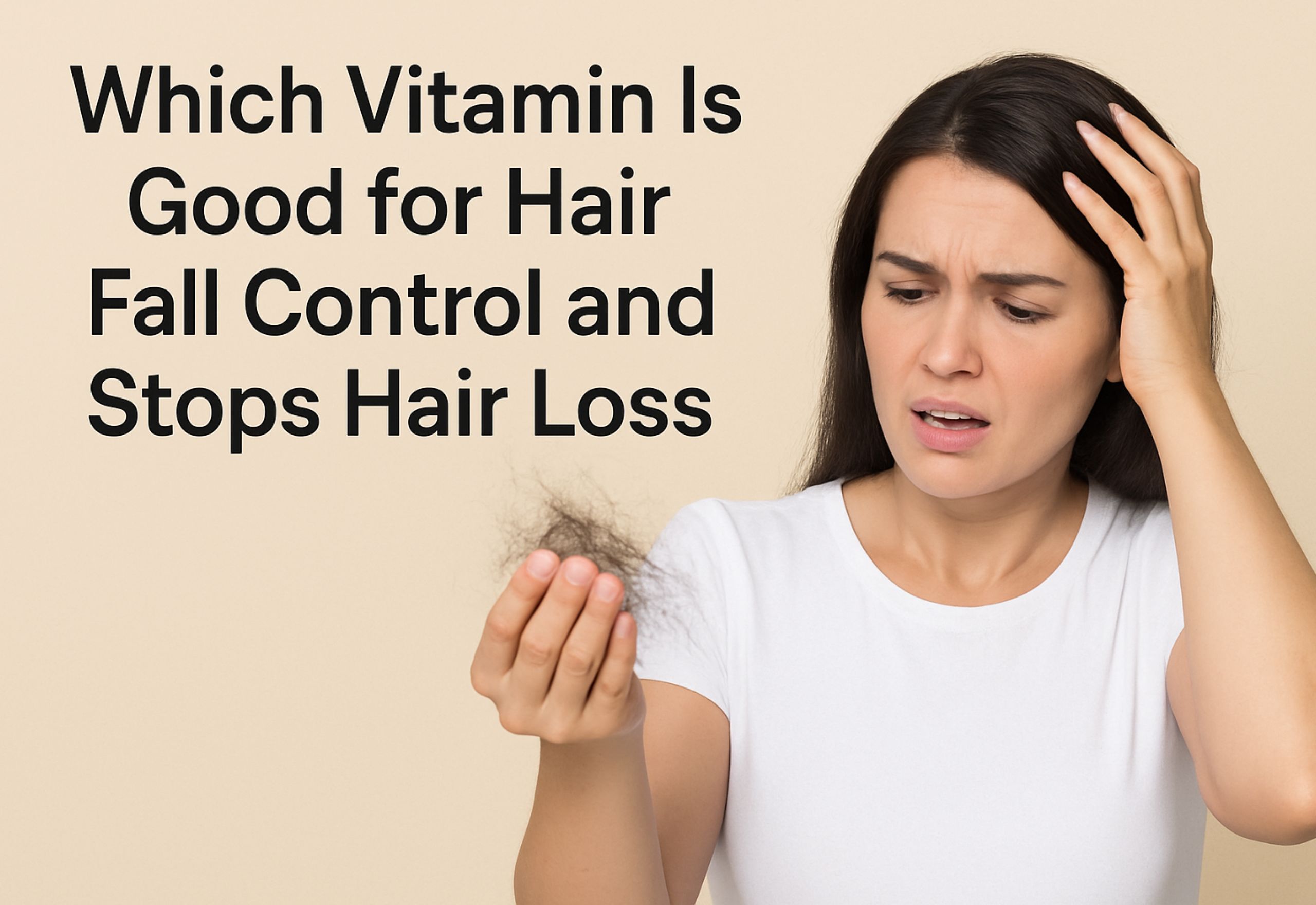Losing your hair can be a frustrating process that diminishes your appearance and, in turn, your confidence. Platelet-rich plasma (PRP) therapy for hair loss provides a natural, science-based solution that takes advantage of your blood’s growth factors to get your hair follicles active again and improve the health of your scalp.
PRP therapy has been a popular minimally invasive option to assist in platelet-rich plasma for hair regrowth, for applicants who want to get rid of any strong chemicals or hours of long recovery.
Learn how PRP works for hair loss, the benefits of PRP for hair restoration, how the entire process works step-by-step, and any safety risks to consider. You will have the information needed to decide if it is right for you and your hair restoration journey.
How PRP Works to Support Hair Restoration
To understand how does PRP work for hair loss, it is helpful to know what is inside your blood. Blood contains red cells, white cells, plasma, and platelets. Platelets contain growth factors, which are natural proteins that help our tissues to repair, aid in healing, and stimulate cell activities.
In prp therapy for hair loss, we extract a small amount of blood, and centrifuge it, or spin it fast, to separate the platelets, creating something called platelet-rich plasma. The platelet-rich plasma is then placed on the area of the scalp that is thinning hair.
The growth factors in PRP signal dormant or weakened hair follicles to transition from a dormant phase to an active growth phase, improve blood supply to the follicles, and improve the quality of the hair shaft. Therefore, we find that platelet-rich plasma for hair regrowth is especially effective in early-to-moderate hair thinning where there are not completely deficient hair follicles, but hair follicles are not performing at full vigor.
Also Read: Also Read: Scalp Detox: Does It Really Help With Hair Growth?
The Standard PRP Experience Step-by-Step
This is what happens in an average hair loss PRP treatment:
1. Initial Consultation & Scalp Assessment
Your trichologist or dermatologist completes a medical history assessment and scalp examination, and determines if you are going to be a candidate for platelet-rich plasma hair regrowth therapy.
2. Blood Collection
You get a routine blood draw of a little blood, 10-30 ml, from your arm.
3. Blood Component Separation
The blood is placed into centrifuges, which spin at a high rate of speed to separate the platelet-rich plasma from the rest of the components of blood.
4. User-Friendly Scalp Preparation
The area of treatment is prepared and cleaned, and a numbing cream or local anaesthetic can be used to reduce pain.
5. Targeted platelet-rich plasma Treatment
Your concentrated PRP medication will then be injected into your thinner or sparser hair area with microneedling or fine injections. Growth factors are directly applied to your hair follicles to stimulate hair growth.
6. Aftercare to Achieve the Best Results
After your treatment, you would receive aftercare, including that you shouldn’t wash your hair for 12-24 hours and avoid direct sun exposure on the scalp.
Attacks are usually 45-60 minutes in duration, and being able to continue your usual day afterwards is normal, except for minimal downtime. The majority, if not all, individuals return to normal life on the same day.
Also Read: How to stop hair fall naturally at home?
The Amazing Benefits of PRP for Hair
When delivered by an experienced clinician, prp therapy for hair loss has shown effective results both in clinical trials and in practice. The growth factors that are found in platelet-rich plasma for hair regrowth, the natural healing and normalization process of the scalp to restore follicle function over time, and return to normal hair quality during PRP therapy.
1. Natural & Chemical-Free Treatment
Because PRP uses your blood, there is no introduction of synthetic medications, which lowers any chance of allergic reactions and/or systemic risks.
2. Activation of Dormant Follicles
Growth factors can stimulate follicles to move into the active growth (anagen) phase, which is how PRP acts at a cellular level for hair loss. while facilitating the natural process of hair restoration.
3. Improve Density & Thickness of Hair
If you go for continuous sessions of PRP, you can notice that the quality of the previous hair strands starts to improve over time and that the overall appearance of hair is indirectly affected to appear denser and thicker.
4. Minimal Downtime
Most patients can go about their normal activities throughout the day immediately after treatment, which is helpful for those with busy lifestyles.
5. Adjustable Treatment Plan
PRP protocols can be modified around the level of thinning or shedding, the condition of the scalp, as well as how a person individually responds to treatment.
In summary, while results may vary, many patients will see incremental improvement in hair texture, strength, and coverage over the following months after treatment, especially if they seek treatment before they notice progressive degeneration and loss of hair.
Stay Informed: What to Expect After PRP (Side-Effects)
Most people tolerate prp therapy for hair loss very well, and side effects, when they occur, are usually mild and short-lived. Because platelet-rich plasma for hair regrowth comes from your blood, the risk of any allergic reactions is almost nonexistent.
Here are some common, short-term effects you may experience:
1: Minimal Redness or Swelling: This is an expected healing response from your body.
2: Temporarily Tender: You may notice mild tenderness where we applied the PRP. This should subside in 24-48 hours after your procedure.
3: A Little Bruising: You may notice small markings from the injection site. These should resolve very quickly.
4: Brief Headaches: Some clients have experienced a headache immediately after the session; however, this tends to resolve quite quickly.
These effects are all part of the normal healing process of your body, and in many cases, are a sign that the treatment is activating your scalp healing process. Knowing how PRP works for hair loss, by delivering growth factors directly to the hair follicles, may help you to view these sensations as a good sign of the process at work.
Also Read: Which oil is best for hair growth and thickness?
Who will get the most benefit from PRP Therapy?
While almost anyone with thinning hair may be interested in prp therapy for hair loss, there are certain situations when people consistently see the best benefit. Because platelet-rich plasma for hair regrowth works best on follicles that are still active, starting therapy sooner rather than later can improve your results.
You suspect you might be a good candidate if:
1: Your hair loss is early-to-moderate, not significantly balding.
2: Your scalp is healthy, with no active infections.
3: You have a normal platelet count that allows for a therapeutic level of growth factor.
4: You are relatively healthy, with obligations to some controlled chronic illnesses.
5: You are looking for a natural, drug-free option that can supplement other methods of hair restoration.
The answer to how PRP works for hair loss, repurposes your present hair follicles into the growth cycle, which is why it is particularly useful for candidates with not too much follicle loss.
When an appropriate candidate is evaluated with an expert technique, the benefits of PRP for hair can be both visually significant and long-lasting.
Tips for a Successful PRP Journey
Maximizing the results of your prp therapy for hair loss is not only about the treatment; it is also about what you do before, between, and after your sessions. Since platelet-rich plasma for hair regrowth relies on your body’s natural healing properties, by caring for your hair properly and forming the right habits, you can make a noticeable difference.
Ways to get the most from your PRP are:
Complete the Entire Plan
1: PRP works gradually. Most patients have 3 – 6 initial sessions spaced out 3 – 6 weeks apart, and then maintenance every 4 – 6 months. Skipping sessions can delay progress.
Adhere to All Aftercare Instructions
1: Your specialist may suggest that you avoid washing your hair for 12 – 24 hours, avoid heavy workouts for a day or two, and protect your scalp from direct sunlight.
Have a Healthy Lifestyle
1: Good nutrition, adequate hydration, and stress reduction will help maintain good circulation to the scalp and healthy hair follicles, which will complement your experience following PRP therapy.
Pair PRP with a Supportive Hair Regime
1: In some cases, doctors may combine PRP with microneedling, low-level laser therapy, or topical minoxidil to aid hair growth.
Keep Track of Your Progress
1: Take some clear photos of your hair before your first treatment and again at further stages. These images can help demonstrate how your hair density and thickness are gradually improving, which might not be noticed day-to-day.
By being consistent and following guidance from your practitioner, you have the best chance of success in achieving post-prp therapy for hair loss effects: healthier and stronger, denser hair development in time.
Also Read: Is it okay to comb wet hair?
Conclusion
PRP hair loss treatment provides a safe and natural means of triggering hair growth using platelet-rich plasma to restore hair. With an understanding of the mechanism of PRP in treating hair loss and following the guidance of your professional, you will be able to reap the possible advantages of PRP for hair. Keep your sessions scheduled, follow any post-treatment protocols, and complement your results with an optimized lifestyle. If you do PRP regularly, you should see a lot of improvement in the density, texture of the hair, and the health of the scalp as a whole.
FAQs
1. How long until I can wash my hair following PRP?
You should wait 12–24 hours to wash your hair. Please use a gentle shampoo, like a sulfate-free non-medicated shampoo.
2. Is PRP painful?
Most people will only feel mild discomfort at worst. Numbing cream or local anesthetic is applied before the procedure begins.
3. Can PRP be combined with other procedures?
Yes, PRP is commonly performed with laser therapy, microneedling, or topical hair restoration processes.
4. Is PRP safe to do while pregnant or breastfeeding?
There are commonly other procedures done in conjunction with PRP such as laser therapy, microneedle therapy or topical hair restoration processes.
5. Will I shed more hair after PRP?
You may have increased shedding temporarily while weaker hair is lost and replaced with new growth.
6. How long until I see results?
Usually, there is some improvement noted after 2–3 PRP procedures, but optimal results are seen in 4–6 months.
7. Does PRP regrowth last forever?
No. It is important to have maintenance PRP every 4–6 months to maintain your results.
8. Can I do PRP if I have scarring alopecia?
PRP is usually less effective in the case of scarring alopecia. Please check to see if PRP would be appropriate for you with your dermatologist.
9. Can diet positively impact my PRP outcomes?
A balanced diet full of nutrients, especially protein, iron (for oxygen transport), zinc (for immune support), and vitamin D (for cellular support), may help with your hair health.
10. What is the difference between PRP and stem cell therapy?
The significant difference is that PRP utilizes your platelets for all of their growth factors, and stem cell therapy utilizes live regenerative cells.



